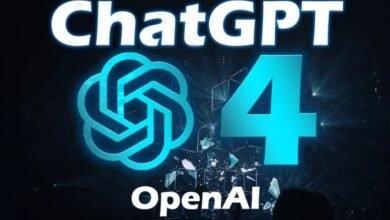What are the new features and capabilities of GPT-4?

The development of artificial intelligence (AI) is progressing at a rapid pace, with new breakthroughs and advancements being made regularly. One such development is the upcoming release of GPT-4, the latest version of the Generative Pre-trained Transformer (GPT) language model from OpenAI. We will explore the new features and capabilities of GPT-4 and how they could impact the field of AI and beyond.
What is GPT-4?
GPT-4 is the fourth iteration of the GPT series of language models from OpenAI, which are designed to generate human-like text based on a given prompt. It is built on the same transformer-based architecture as its predecessors, but with significant enhancements to its capabilities and performance.
What are the new features and capabilities of GPT-4?
- Improved language modeling: GPT-4 is expected to have a significantly larger model size and training data than its predecessors, enabling it to generate more complex and coherent language. It could potentially generate long-form text with more consistency and accuracy.
- Multilingual support: GPT-4 is expected to have improved multilingual support, with the ability to generate text in multiple languages. This could be particularly useful in applications such as translation and language learning.
- Few-shot learning: GPT-4 is expected to have improved few-shot learning capabilities, which means that it can learn new tasks with very few examples. This could be particularly useful in applications such as chatbots and customer service, where the system needs to adapt to new scenarios and contexts quickly.
- Improved reasoning and inference: GPT-4 is expected to have improved reasoning and inference capabilities, which means that it can understand and interpret the context more accurately. This could be particularly useful in applications such as question-answering and dialogue generation.
- Improved control over generated text: GPT-4 is expected to have improved control over the generated text, allowing users to specify certain attributes such as tone, style, and sentiment. This could be particularly useful in applications such as content creation and marketing.
- Improved ethical considerations: GPT-4 is expected to have improved ethical considerations, including reducing biases and ensuring that the generated text does not promote hate speech or harmful content. This could be particularly useful in applications such as online moderation and content filtering.
What impact could GPT-4 have on the field of AI and beyond?
The release of GPT-4 could have a significant impact on the field of AI and beyond. Some potential implications include:
- Advancements in natural language processing: GPT-4 could enable significant advancements in natural language processing, making it easier for humans to communicate with machines.
- Advancements in automation: GPT-4 could enable more advanced automation in applications such as customer service, content creation, and translation, reducing the need for human intervention.
- Advancements in machine learning: GPT-4 could enable more advanced machine learning techniques, such as few-shot learning and improved reasoning and inference, making it easier for machines to adapt to new scenarios and contexts.
- Ethical considerations: GPT-4’s improved ethical considerations could have a significant impact on online moderation and content filtering, helping to reduce harmful content and promote a more positive online environment.
Conclusion
GPT-4 is set to be a significant advancement in the field of AI, with improved language modeling, multilingual support, few-shot learning, improved reasoning, and inference, improved control over generated text, and improved ethical considerations. These advancements could have a significant impact on the field of AI and beyond, enabling more advanced natural language processing, automation, and machine learning techniques, and improving ethical considerations in online moderation and content filtering. The release






